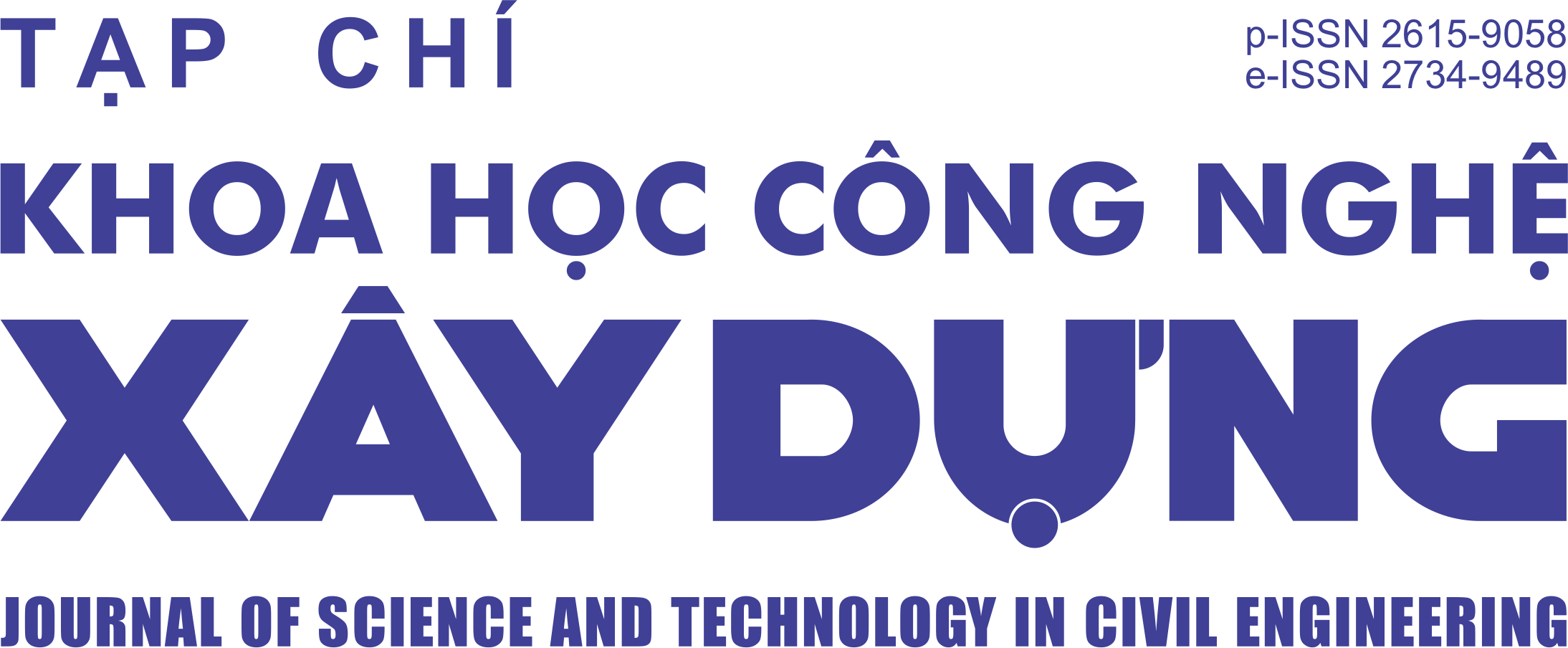Evaluation of the quality of drainage sludge in To Lich River basin and the proposal of suitable management solutions
Abstract
This study aims to examine the characteristics and to assess the hazardous level as well as the reusability of sewage sludge and river sediment from To Lich River (TLR) basin, which is the largest wastewater catchment in Hanoi. Sludge samples were collected from six manholes along Tran Binh Trong (TBT) and Thai Ha (TH) sewers in rainy and dry seasons. Sediment samples were collected from seven sites near principal wastewater and storm water discharging points along TLR upstream in dry season. Parameters, such as pH, humidity, total ash, zinc (Zn), copper (Cu), lead (Pb), and cadmium (Cd) in sewage sludge were examined. Trace metals in TLR sediment, e.g. arsenic (As), mercury (Hg), lead (Pb), zinc (Zn), chromium (Cr), and cadmium (Cd) were analyzed. The results of sludge and sediment analysis were then compared with national environmental regulations for hazards and aquatic life preservation, and land use purposes, including QCVN 43:2012/BTNMT, QCVN 50:2013/BTNMT, QCVN 03-MT: 2015/BTNMT. The majority of examined parameters of sewage sludge, except ash content, are higher in dry seasons than in rainy seasons. Regarding hazardous level, all the investigated heavy metals in sewage sludge in dry and rainy seasons, respectively, as followings: 644 and 598 mg.kg-1 Zn, 146.5 and 127.3 mg.kg-1 Cu, 71.2 and 69.5 mg.kg-1 Pb, and 1.51 and 1.46 mg.kg-1 Cd, are below the legislated thresholds, thus, can be considered as nontoxic. Reusability of sewage sludge, however, should be considered since Zn exceeded permissible values for all of land use purposes. The concentration of As (0.659 mg.kg-1), Hg (0.03 mg.kg-1), Pb (4.07 mg.kg-1), Zn (81.3 mg.kg-1), and Cd (0.078 mg.kg-1) meets national standards on hazardous waste, and sludge from water treatment process, as well as to protect aquatic life and to be reused in anthropogenic activities. However, Cr concentration (157 mg.kg-1) is above those legislated thresholds, thus, unsuitable to be reused as land or fertilizer. With high concentration of several trace metals and humidity, drainage sludge from TLR basins should be treated to improve its reusability.
Article history: Received 20 March 2018, Revised 05 April 2018, Accepted 27 April 2018
Downloads
1. The Author assigns all copyright in and to the article (the Work) to the Journal of Science and Technology in Civil Engineering (JSTCE) – Hanoi University of Civil Engineering (HUCE), including the right to publish, republish, transmit, sell and distribute the Work in whole or in part in electronic and print editions of the Journal, in all media of expression now known or later developed.
2. By this assignment of copyright to the JSTCE, reproduction, posting, transmission, distribution or other use of the Work in whole or in part in any medium by the Author requires a full citation to the Journal, suitable in form and content as follows: title of article, authors’ names, journal title, volume, issue, year, copyright owner as specified in the Journal, DOI number. Links to the final article published on the website of the Journal are encouraged.
3. The Author and the company/employer agree that any and all copies of the final published version of the Work or any part thereof distributed or posted by them in print or electronic format as permitted herein will include the notice of copyright as stipulated in the Journal and a full citation to the Journal as published on the website.







